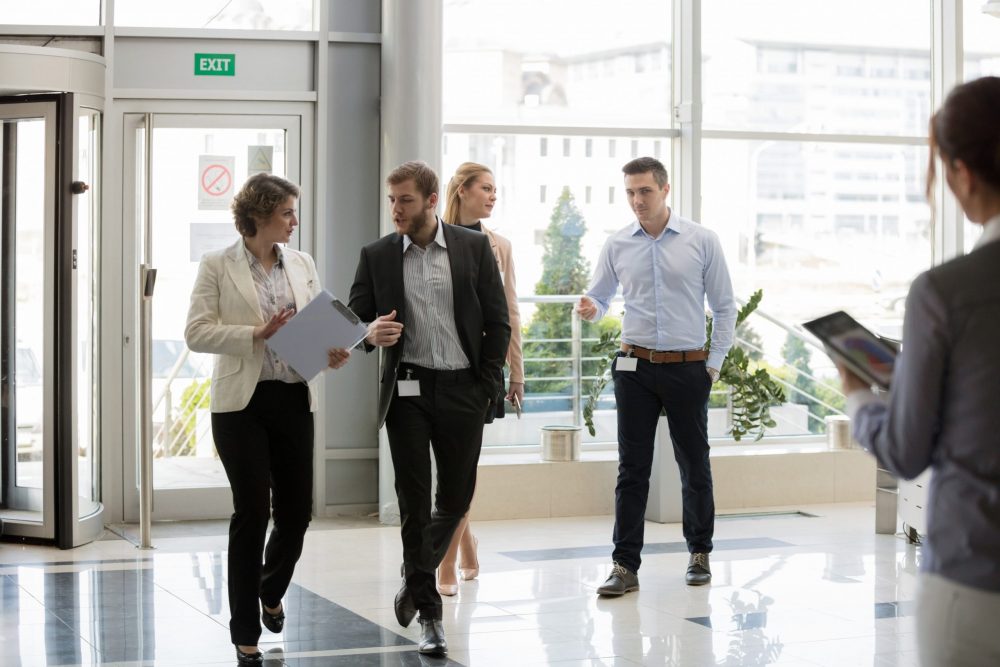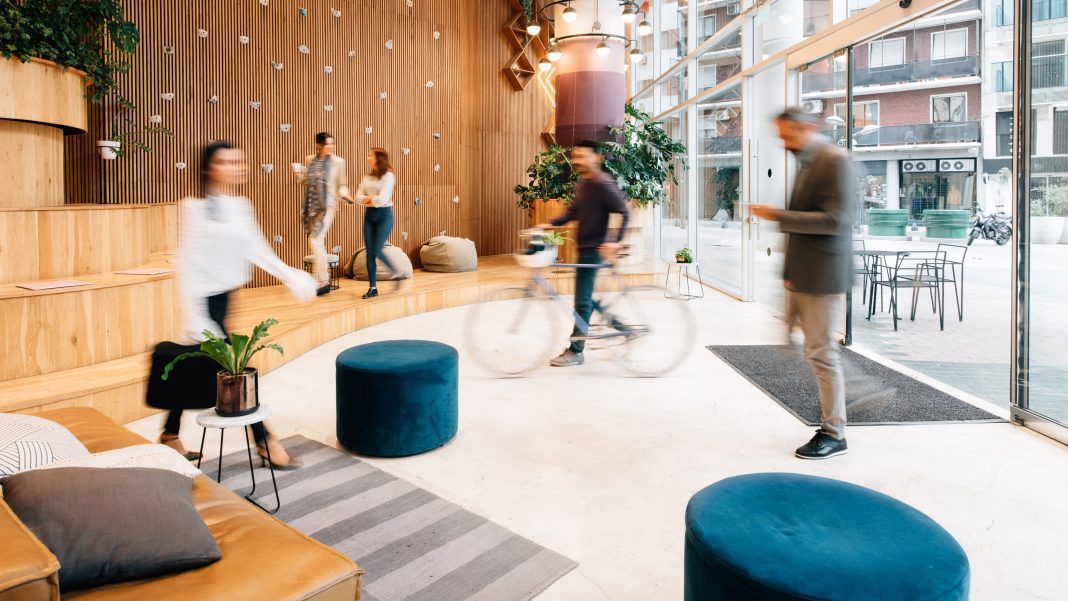In today’s hybrid workplace, every visit counts – and not just for employees. Whether it’s a prospective hire, a partner, or a high-value client, your office is no longer just a backdrop for meetings.
It’s the physical manifestation of who you are as a company. A place where culture, brand, and operational excellence are made tangible. Often, that impression is formed in the first five minutes. Yet visitor experiences in most workplaces remain transactional at best, and frustrating at worst. A guest arrives. They queue to check in. They fill out redundant forms. They’re directed to an unmanned reception desk or handed a generic paper badge. And all this happens just steps away from a lobby adorned with awards for “Best Places to Work.”
It doesn’t add up.
If your company is investing in high-end spaces, workplace apps, and employer brand strategy, but guests are still fumbling for Wi-Fi or being bounced between sign-in desks and typing their name and email address into systems over and over – it’s time to borrow a playbook from another industry.
It’s time to start thinking like hospitality professionals.

What the Office Can Learn from Hotels
Hotels have long understood that a guest’s perception of service starts before they ever reach the front desk. Clear signage. Seamless check-in. Warm, anticipatory service. These are standard in hospitality and increasingly expected in the workplace.
Now more than ever, your front-of-house experience needs to communicate more than just security. It needs to say: “We’re ready for you.”
But readiness takes more than tech. It requires experience design, systems integration, and a clear owner of the end-to-end guest journey. The most successful workplaces today are blending workplace experience, facilities, IT, and branding teams to reimagine their spaces not just as places to work, but as platforms to engage with employees and guests alike.
Designing for the Real Journey (Not the Ideal One)
Too often, visitor experience systems are implemented in isolation. Technically their deployments are sound but operationally, they too often drive a wedge in overall experience.
One recent real-world example: A sleek new visitor check-in kiosk was installed in a major office building. The interface was intuitive. The badge printer worked. But due to building restrictions, there was a single sign-in kiosk was placed 30 feet away from the reception desk with no signage. Guests would walk to the desk first (naturally), only to be redirected, queue at the kiosk, then return to show their ID and get the badge to finish check-in process. Only then was a phone call made to the host that their guests were in the lobby. The result? Bottlenecks at the reception desk, confusion about who needs to go where and do what, and overall, a poor first impression.
This isn’t a hardware, software or building issue. It’s a hospitality one.
Real hospitality design considers instinct. It anticipates behavior. It removes friction before it happens.
Eat Your Own Dogfood: The Mystery Shopper Test
One of the most powerful tools in identifying gaps is also the simplest: be a visitor in your own workplace.
Inspired by the concept of “eating your own dogfood” in software development, this approach borrows from the mystery shopper techniques used in retail and hospitality.
Next time you visit one of your sites:
- Arrive unannounced.
- Try the end-to-end guest registration and access flow.
- Navigate the space like a first-time visitor.
- Join a meeting as if it were your first day on the job.
Better yet, bring a small group and watch what happens. See where they get stuck. Observe who they ask for help. Count how many touchpoints and elapsed time it takes to get from the curbside to a sitting with a colleague.
You’ll often discover that the systems involved “work” in isolation, but the process breaks down in practice due to signage gaps, data inconsistencies, or poor integration across systems and owners.
These pain points don’t show up on project plans. They show up in real life.

Tech that Feels Human
Modern workplaces have the tools to transform guest experience. Tech-enabled visitor management systems, mobile pre-check-in, visitor kiosks and AI-enabled signage can all remove friction and increase personalization. But they only succeed when used in the service of the end-to-end guest experience, not just the individual system owner.
The goal isn’t just efficiency. It’s to make someone feel welcomed, confident, and cared for. Just like a great hotel does.
When integrated well, technology becomes invisible. The space just “works.” And guests leave remembering how they felt, not how your process worked.
Final Thought: Who Owns the First Impression?
Hospitality in the workplace isn’t about handing out water bottles and calling it service. It’s about architecting an experience from end to end and to do that successfully, you need to make sure someone owns that experience fully.
In most organizations, visitor management is fragmented across security, facilities, IT, and HR. The result? No one is accountable for how the entire journey feels.
That’s where forward-thinking workplace leaders have a chance to make a real impact.
Because in a world where employees come to the office by choice and visitors are often encountering your brand in person for the first time, the quality of that experience matters more than ever.
Don’t wait for feedback.
Be the guest.
And (re)design from there.
Images courtesy of Accenture.


